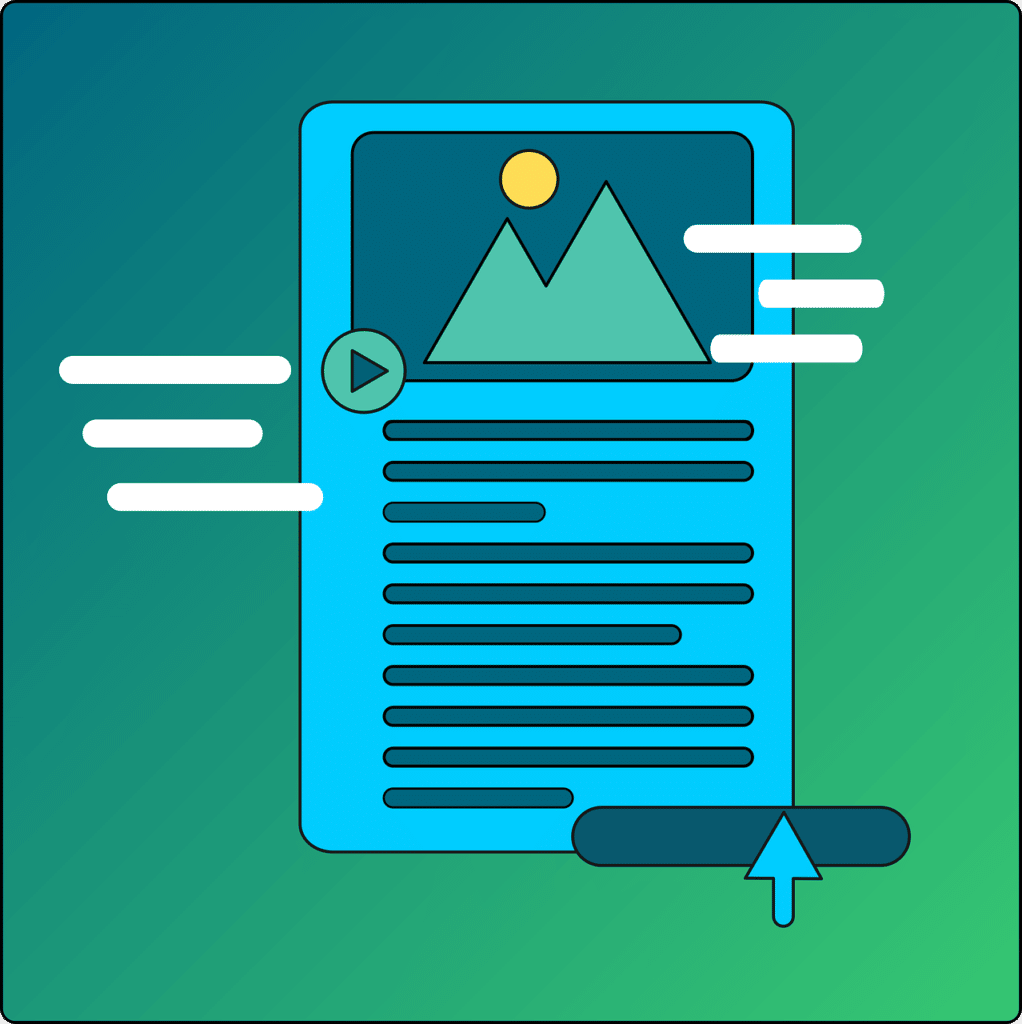
According to the blog Clear, it is approximately 64 % users who leave a site after a bad experience! Expert in UX Design or not, we are all sensitive to the user experience of the sites we visit. When the user journey is bad, the experience is even more unpleasant and we quickly abandon our research.
Difficulty navigating or random button placement, UX Design represents the experience we have of the products or services we interact with. A poor user experience can have serious consequences on brand awareness. This is why, in addition to a high-performance website, it is imperative to offer a UX Design that meets the expectations of Internet users, is intuitive, aesthetic and allows for ease of navigation in order to ensure conversion.
Are you a UX Designer or are you interested in this subject? You absolutely must know the best practices in terms of UX Design to avoid simple mistakes and ensure the good image of your brand.
By reflex, we would simply want to follow our instinct and design something the way we feel. But this is what you absolutely must not do! Indeed, design has nothing to do with what you like, but must be thought of only for the target audience. As a UX Designer, your role is to identify and eliminate the blockages that users may encounter. And these are constantly changing! But the good news is that the research on how to eliminate friction has already been largely determined, so you don’t need to reinvent the wheel.
By practicing UX Design for your website or application, you will quickly notice these advantages:
In this way, you can respond fully to user demand and build up a loyal customer base for your company. To help you do just that, here are 10 best practices for high-performance UX Design!
This principle is obvious, but it is at the heart of your UX design: to create a website or application offering an optimal user experience, you absolutely must put yourself in the head of your target audience throughout the design. Internet users are at the heart of your design strategy. Why do they need this product or service, how do they consume, the way they interact on the web, etc.
Then create personas to establish the characteristics of your ideal Internet user and imagine the experience they would like to have on your website or mobile application.

A good website or mobile application should be able to be used by everyone. And that includes people with visual or hearing disabilities. Good UX design should allow a site to be used by everyone. Did you know that 8 % of the male population are color blind? You absolutely must make sure that everyone can easily get to grips with your platform.
By respecting these specificities, you increase the number of people who can interact with your website. It’s simply about showing empathy towards your audience. There are many tools available to assess the level of accessibility such as Lighthouse, Axis or Accessibility Developer Tools. You will then have a list of recommendations to help you improve the accessibility of your site.
A site map is essential to prioritize the important information you want to convey. This way, your users should know where to go to find the right information and products. This way, they will not experience poor navigation on your site which could cause you to lose notoriety.
With a sitemap, you will be able to clearly understand where a new page should be placed. A sitemap is therefore an essential tool of good UX design.
Your pages must be consistent with each other. Use the same type of image and typography. Also choose a harmonious color palette. The best thing, if you already have one, is to use all the elements of your graphical charter. The goal is first of all to highlight your brand image, but also not to pollute your website with elements that have nothing to do with each other and to make reading unpleasant for your audience! The risk would be to lose the attention of your Internet users and therefore see your conversion rate drop.
Clear and consistent navigation from page to page can make a huge difference in how people experience your website. This includes a navigation bar that stays in the same place from page to page, at the top of the screen, organized drop-down menus that lead to landing pages, and login buttons.
Likewise, at the bottom of your page, your users expect to find company information, contact details, and links to supporting pages or even an FAQ!
Usability testing is easier than ever. Before you launch your site, test it to avoid any bugs in real life. Then, use the data to constantly improve your site design. Think A/B testing and heat mapping, as well as live user feedback as they interact with your site or product. Then, adjust based on the results and test again.
Your design is a living work of art that will constantly evolve and improve, so don’t risk letting it stagnate for too long. Remember the main mission of UX Design: to meet the expectations of the target audience!
Your users don’t want to have to guess what message you want to convey. If you label a button “Buy Now,” your user will expect to be taken to a product page where they can buy. On the other hand, if a button says “Sign Up Now,” your user is probably wondering: Why should they sign up? Is this for a newsletter? When you’re writing for users, your copy should be concise, clear, accessible, and engaging.
When we say “accessible,” we mean that your text should be at a simple reading level without giving technical details that would distract the reader. An error message, for example, should not explain in detail why a page is not loading. It should say, “The page cannot be loaded.”

The hierarchy of text on a page plays an important role in your user's understanding. Use H1s relevantly and only for the most critical messages. Use H2s to divide the text into sections, then H3s for subsections. It is then a question of respecting the technical rules of the web writing to attract your readers. Your users will skim through text instead of reading it carefully, so breaking up your text will help them understand messages more easily and jump to the sections most relevant to them. Highlight important information so that the message you want to convey is quickly understandable and thus ensure conversion of your visitors.
Design trends come and go, but best practices are timeless. When you put the user at the forefront of your design, you create a product that people want to use and, more importantly, that delivers what they need. Your user base will be more loyal, and you’ll see your brand awareness grow quickly. Plus, basic best practices are best practices. If you’re seeing a decline in user satisfaction, you can go back to these best practices and make sure you’ve mastered the basics before diving into more advanced techniques.
Examine your site statistics to determine how your users use your product. If most of your users use a mobile device, you'll need to prioritize responsive design. If most of your users use an Android phone, you may need to integrate Google Pay.
Humans love white space. It helps the brain process information better and reduces cognitive load. While it may be tempting to create complex designs with fancy animations, it is ultimately better to keep a simple design, easy to understand and also fast to load. As we have already explained: do not pollute your website with unnecessary visual elements that are not consistent with each other! The text must be effective and the images clear.
At the early stages of design, start by creating mock-ups that will allow you to refine the UX design as you go.
You will then have understood, UX design will allow you to offer a high-performance interface adapted to the behavior of your target Internet users! However, something is still missing. What about UI Design? Although different from UX, the two practices are completely inseparable! UI Design (user interface) focuses solely on the technical aspect of a web interface. That is to say on the integration of ergonomic elements which allow fluid navigation and easy handling of a web interface. It's simply a matter of making the graphical environment of software pleasant to use.
At Geekworkers, we work with web design experts who master all the specificities of UX Design to create intuitive websites or applications. We obviously go through all these essential practices, adapting them to your request!
Our web agency is focused on quality and satisfaction for both
entrepreneurs, SMEs and large companies in French-speaking Switzerland
Our Web & Marketing agency is present at Lausanne since 2020 and now has more than 25 employees to support SMEs, entrepreneurs and large companies in French-speaking Switzerland.
We create your showcase and e-commerce sites in Swiss
We let's create and let's optimize your Online Store in Swiss
Find clients and increase your turnover thanks to Digital Marketing
Geekworkers is a web agency based in Lausanne in French-speaking Switzerland, specialising in the creation of websites, e-commerce shops, mobile applications and digital marketing (SEO & Google Ads) to help you succeed online.
Geekworkers pricing has been designed as much for start-ups and SMEs as for large companies demanding in terms of service quality.
To provide the best experiences, we use technologies such as cookies to store and/or access device information. Consenting to these technologies will allow us to process data such as browsing behavior or unique identifiers on this site. Not consenting or withdrawing consent may adversely affect certain functionality and features.